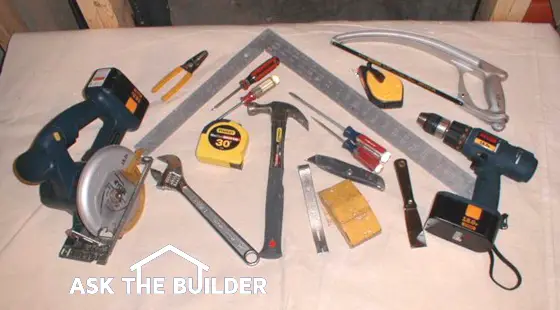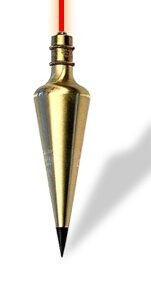Handy Tools for Your New House

Handy Tools for Your New House
If you are buying or building a new home to get a respite from repair or other projects around the house, you are dreaming. I am quite sure within the first 30 days you may find yourself doing any number of things that transform a new house into a comfortable home that fits like a glove. If you are interested, I will share a few of my secret tools that are tucked away in my toolbelt. More than once these special tools have saved both time and money - two very valuable commodities in this day and age.
Tools for Carpentry
When I am involved in either rough carpentry or even finish carpentry jobs, you can bet you will find my wood rasp in use any number of times during the day. This rasp looks like a fingernail file on massive doses of steroids. Wood rasps are made using hardened steel. Mine is eight inches long and one inch wide. It has two cutting surfaces on each side - coarse cutting teeth and fine cutting grooves. One surface is flat and the other is slightly convex.
A rasp comes in very handy when you want to remove splinters from a saw cut or quickly ease (create a slight round profile) a sharp edge. I frequently use it to trim away wood on the cut edge of a miter joint on woodwork. Removal of this wood allows mitered trim to fit perfectly on wall surfaces that are not in the same plane. You may need to trim a small amount of wood away on a shelf that is not fitting well into that slightly out-of-square corner. There are hundreds of things you can use a rasp for.
Magnetic Pickup Tool
Can you remember the last time you assembled anything? If you are like me, a screw, nut or bolt gets dropped and is sucked by a mystical force into the closest furnace duct, crack or crevice. It can even be a small screw that drops inside an appliance. My telescopic magnetic pick-up tool saves the day each time this happens to me. When not in use, the tool shaft collapses just like a common radio antenna. If you don't have this tool, you should get one immediately.

These are just a few of the basic tools you’ll need to do home repairs around your home. Photo Credit: Tim Carter
Mini Tubing Cutter
If you are an ambitious do-it-yourselfer, you may jump feet first into adding water supply lines to a new sink, maybe a forgotten hose bib or even an ice-maker supply line. Plumbers often install water supply lines close to floor joists. A standard tubing cutter can't always be rotated a full turn in these tight spaces, but my miniature tubing cutter can! This little tool is only one and one quarter inches square and cuts both one-half and three-quarter inch copper tubing with ease. The best part is they are affordable.

Here's the magical tool. It's the absolute BEST mini tubing cutter I've ever used. Click on the image to purchase this mini cutter. (C) Copyright Tim Carter
Do you like to use drywall screws to assemble pieces of wood? I do as screws seem to hold so much better over time than a standard uncoated nail. You can get nails that have glue or ribbed shafts that hold well, but often there is no substitute for a screw. Screws look best when the heads are flush with the finish surface or slightly countersunk. I have a set of special Phillips head screw bits that are also countersink hole creators. The bits actually have cutting edges on the sides of the four tip blades. The steel is hardened and makes perfect countersink holes each time. Without this hole, you can snap the screw shaft or worse yet, strip the wood by over-driving the screw.
The Plumb Bob
I saved the best for last. My four-inch long brass plumb bob has its own private compartment in my toolbelt. I have all sorts of levels, laser levels and even transits that can create level and plumb lines. These are great tools, but accidents can cause them to get out of adjustment. The last time I checked, Mother Nature's gravity is perfectly aligned.
A plumb bob can be used to create perfectly plumb lines for any number of jobs. If you create a right triangle from the plumb line, you get a perfectly level line. Who would think a simple piece of metal could produce such precision?
If you don't have these tools, you may start to accumulate them. There is no doubt in my mind that you will smile each time you use each one. Those who view your technique and results will think you are a genius.
Column NH032


